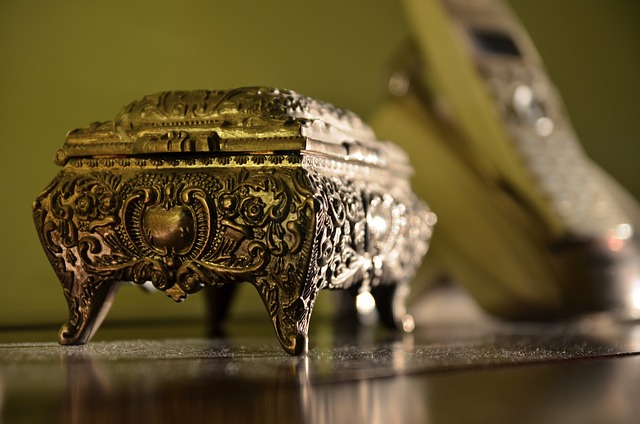When people think about protecting their engagement rings, diamond jewelry, and family heirlooms, they often focus on security: safes, insurance, and careful handling. Few realize that a quieter, far more insidious threat might already be lurking in their homes. Household pests—tiny invaders like insects and rodents—pose real dangers to the safety and integrity of valuable jewelry.
These threats are not just about physical damage. They involve environmental harm, contamination, and even loss over time. Understanding how pests interact with jewelry storage can make the difference between preserving a lifetime’s worth of memories and facing heartbreaking damage that could have been easily prevented.
How Pests Find Their Way into Jewelry Storage
Jewelry boxes, display cases, and storage drawers create ideal environments for certain pests. Dark, enclosed spaces are naturally attractive to insects such as silverfish, moths, and carpet beetles. Rodents, attracted by the smell of natural materials like leather or velvet, can also find their way into jewelry storage areas in search of nesting material or food crumbs.
Many high-end jewelry boxes use organic fabrics, untreated woods, or adhesives that can draw pests in. Insects like silverfish feed on cellulose found in paper, cloth, and adhesives, meaning that jewelry certificates, pouches, and packaging materials are often the first to suffer. Once pests establish a presence inside these spaces, jewelry itself can become collateral damage.
Physical Damage to Jewelry and Settings
While diamonds themselves are remarkably hard and resistant to most types of physical wear, the metals and settings that hold them are more vulnerable. Rodents, in particular, have strong teeth capable of gnawing through wood, soft metals, and even thin plastic casings.
If a jewelry box becomes infested, pests can chew through compartments, dislodge stones, or scratch delicate metalwork. Prongs holding diamonds in place can be bent or loosened, increasing the risk of losing the stone altogether.
Organic gemstones like pearls, opals, and amber are especially at risk. These stones are softer and more porous than diamonds, making them susceptible to scratches, contamination, or absorption of oils and moisture that pests can introduce.
Environmental Damage from Pest Activity
Beyond physical chewing or scratching, pests can indirectly damage jewelry through environmental changes. Rodents and insects often bring moisture into enclosed spaces, whether through bodily fluids, droppings, or simply by creating humid micro-environments inside sealed containers.

Moisture leads to tarnishing of metals such as silver, discoloration of white gold, and corrosion of non-precious components like clasps and chains. Even sealed jewelry boxes can develop internal condensation if pests disrupt the normal airflow and insulation.
In some cases, mold or mildew can form, especially if pests have introduced organic material like nesting fibers or food debris. These contaminants can stain or corrode metals, dull the polish of stones, and create unpleasant odors that permeate the storage materials.
Loss of Sentimental Items
Perhaps the most devastating impact of a pest infestation is not financial, but emotional. Engagement rings, heirloom necklaces, anniversary gifts—all these items carry deep sentimental value that no insurance payout can replace.
A misplaced diamond, a corroded wedding band, or a mold-stained jewelry box does not just represent a material loss. It can feel like a personal violation, an erasure of memories painstakingly built over years or even generations.
Preventing pest-related damage is not only about protecting financial investments. It is about safeguarding the symbols of life’s most important milestones.
Warning Signs to Watch For
Many pest threats go unnoticed until the damage is done. However, there are subtle warning signs that can alert you to a developing problem. Unexplained scratches on metal surfaces, loose stones, strange smells coming from jewelry boxes, or visible debris like insect casings or rodent droppings are all causes for immediate concern.
Frequent checking of stored jewelry is essential. Simply opening boxes, inspecting items under good lighting, and ensuring airflow can discourage pests from settling in.
Professional pest inspections, particularly if a home is prone to moisture or has older construction features, offer another layer of preventive security. Early intervention makes it easier to avoid more significant damage later.
Best Practices for Protecting Jewelry
Proper storage is the first defense against pest damage. Jewelry should be kept in clean, dry, well-ventilated areas. Where possible, sealed cases with desiccant packets to control humidity are ideal. High-quality storage containers made from treated woods, synthetic materials, or sealed plastics offer fewer attractions for insects and rodents.
It is also wise to separate jewelry from organic packaging materials. Original boxes, pouches, and certificates can be stored in separate pest-resistant containers, reducing the risk that pests targeting one material will also attack nearby valuables.
Another important measure is regular rotation. Jewelry that sits untouched for long periods becomes more vulnerable. Wearing, cleaning, and repositioning pieces from time to time helps maintain the integrity of both the jewelry and the storage environment.
If a pest problem is detected, jewelry should be removed immediately and professionally cleaned. The storage area must be thoroughly treated, not just superficially cleaned, to ensure the infestation does not return.
Pest Control as a Part of Jewelry Care
Historically, pest control has been treated as a separate concern from valuables care. However, for homeowners with significant jewelry collections, integrated pest management should be considered part of routine maintenance.
Working with reputable pest control services that understand the importance of sensitive storage areas is crucial. Professionals can offer discreet, low-toxicity treatments designed to protect both the home and the delicate materials inside jewelry boxes.
Preventive pest control measures—like sealing cracks, installing screens, reducing humidity, and removing attractants—also support broader home care goals, protecting not just jewelry, but furniture, clothing, and other heirloom-quality possessions.
Household pests represent a hidden but serious threat to jewelry collections, especially to engagement rings, heirloom pieces, and fine accessories. While most homeowners are vigilant about theft or loss, few consider the slow, silent damage that insects and rodents can cause until it is too late.
By recognizing the risk, understanding how pests interact with storage environments, and taking proactive steps to protect valuable items, homeowners can preserve the beauty, integrity, and emotional significance of their jewelry for generations to come. In the world of precious keepsakes, vigilance today ensures that memories endure tomorrow.
